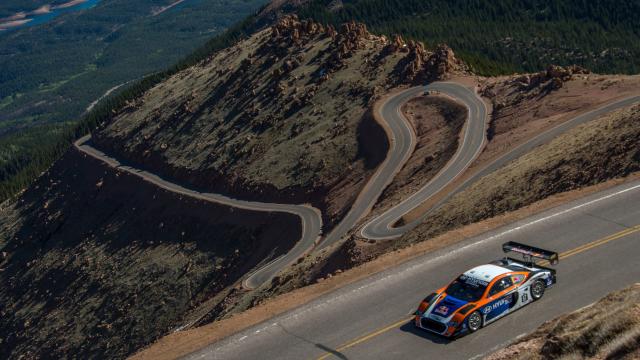The Pikes Peak International Hill Climb is a remarkable place to test athletes and vehicles, in part because it is so brutal and unpredictable. Unfortunately, the same things that make it exciting also make it incredibly dangerous.
The race has claimed seven lives, most recently motorcycle racer Carlin Dunne this past year, a four-time winner of the event. This led the organisers to suspend motorcycle competition for 2020.
Business Insider digs into the history and challenges of the event, interviewing competitors Tommy Boileau and JR Hildebrand to give an understanding of what makes it such a dangerous place to race.
A big part of the danger is the length and complexity of the course: 19 kilometres and 156 turns, and unlike a permanent race track, you can’t just show up for track days throughout the year to practice and help memorise it. There are also no braking markers or turn indicators, and several of the corners look similar at the entrance, only to be drastically different halfway through.
There are few barriers and almost no runoff room, especially at the top. The margin for error is minimal. The chance for error, on the other hand, is increased by the unpredictable wind and weather, and the occasional mountain goat on the road.
The top section has been paved for a few years which makes the track more dangerous than before in some ways. The higher grip means faster speeds. The pavement gets roughed up and deformed from freezing and thawing water, causing an uneven and unpredictable surface.
I talked to professional racing driver and current Pikes Peak Hill Climb champion Robin Shute about the dangers on the course.
“The top is absolutely savage. With the fastest cars being so physical, aerobically you’re pretty much flat out even with oxygen being plumbed into your helmet. Add to that dealing with multiple corners over 100mph (161 km/h) whilst trying to figure out which direction the wind is coming from for each turn. That’s a life or death guesstimation right there. Then there are the bumps to navigate, the road can be so rough it will spin a car in a straight line or launch you a couple of inches in the air.”
The dangers are real, but it is a unique and elevating challenge. “It’s not for everyone,” Shute added, “In fact, it’s barely for anyone. I love it.”
